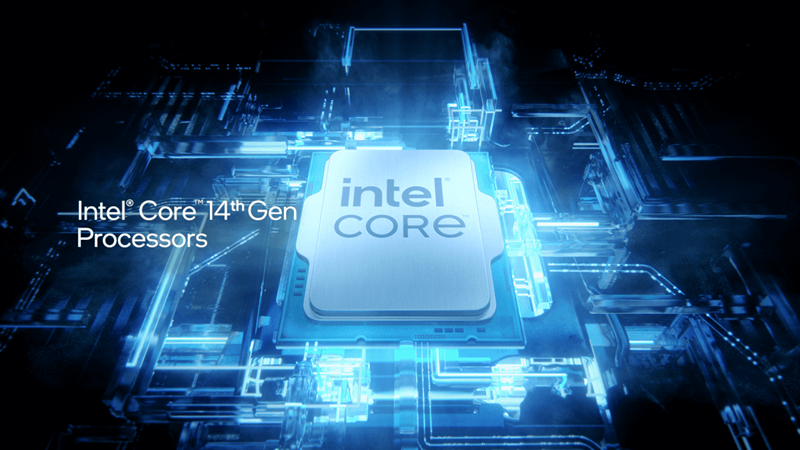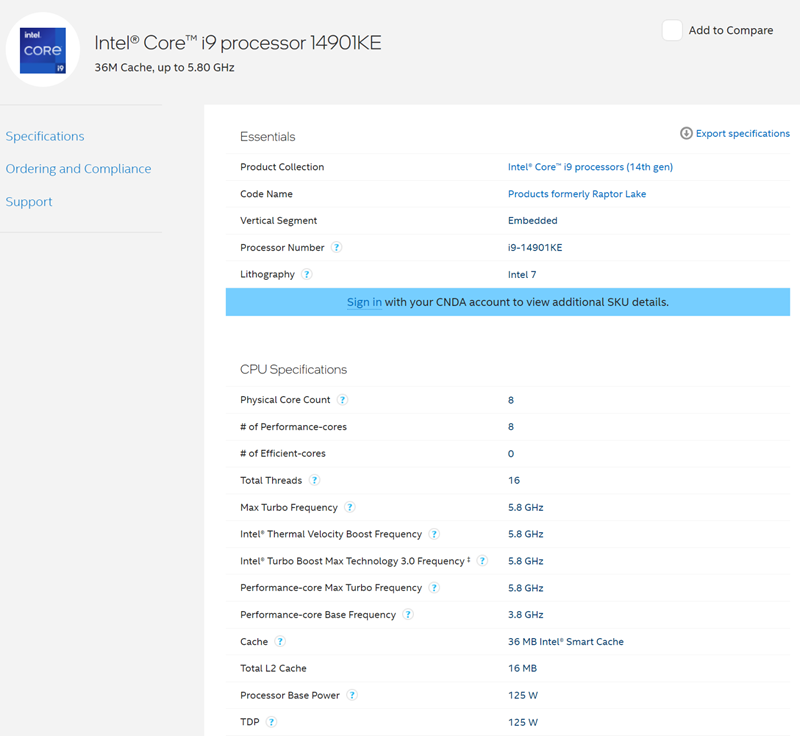Intel has quietly introduced a new series of processors as part of its 14th generation of desktop CPUs, a feature of which is the absence of energy-efficient E-Cores, which until now have been a mandatory attribute of the Raptor Lake family.

Image Source: Intel
A total of 9 new models are presented, which received the “E” index in the name, although in accordance with the specification, there are a total of 11 of them. All of them are built exclusively on the powerful P-Cores (P-Cores) of the Raptor Cove architecture and, according to Intel, focused on embedded systems and the commercial segment. The new processors have the usual LGA 1700 design, so it cannot be ruled out that some distributors and retail chains may offer systems built on their basis.
According to the Wccftech resource, the flagship of the new line is the Core i9-14901KE. It has 8 cores and 16 threads, a base clock speed of 3.8 GHz and a maximum turbo frequency of 5.8 GHz. The cache memory is 36 MB L3 and 16 MB L2. The declared TDP/PL1 is 125 W. Interestingly, this processor supports overclocking, which is not typical for embedded systems.
In addition to the flagship, the line includes Core i7 and Core i5 models with 8 and 6 cores, respectively. Energy-efficient T-versions and variants without integrated graphics (F) will also be available for all series.
List of new models:
-
Core i9-14901KE – 8 cores, up to 5.8 GHz, 36 MB L3, 125 W;
- Core i9-14901TE — 8 cores, up to 5.5 GHz, 36 MB L3, 45 W;
- Core i7-14701E — 8 cores, up to 5.4 GHz, 33 MB L3, 65 W;
- Core i7-14701TE — 8 cores, up to 5.2 GHz, 33 MB L3, 45 W;
- Core i5-14501E – 6 cores, up to 5.2 GHz, 24 MB L3, 65 W;
- Core i5-14501TE — 6 cores, up to 5.1 GHz, 24 MB L3, 45 W;
- Core i5-14401E – 6 cores, up to 4.7 GHz, 24 MB L3, 65 W;
- Core i5-14401TE – 6 cores, up to 4.5 GHz, 24 MB L3, 45 W.

Image Source: Intel
At the moment, new processors have not appeared on open sale. They’re probably not really intended for the mass market, so they’re not guaranteed to be available at retail. But Intel is also preparing other CPUs with only P-cores. In particular, the Bartlett Lake-S series with 12 productive cores is expected to be released, but already in 2025.
Perhaps the release of these processors is related to the recently sensational stability problem of the 13th and 14th generation models, since the abandonment of E-cores could potentially improve the situation for certain use cases.